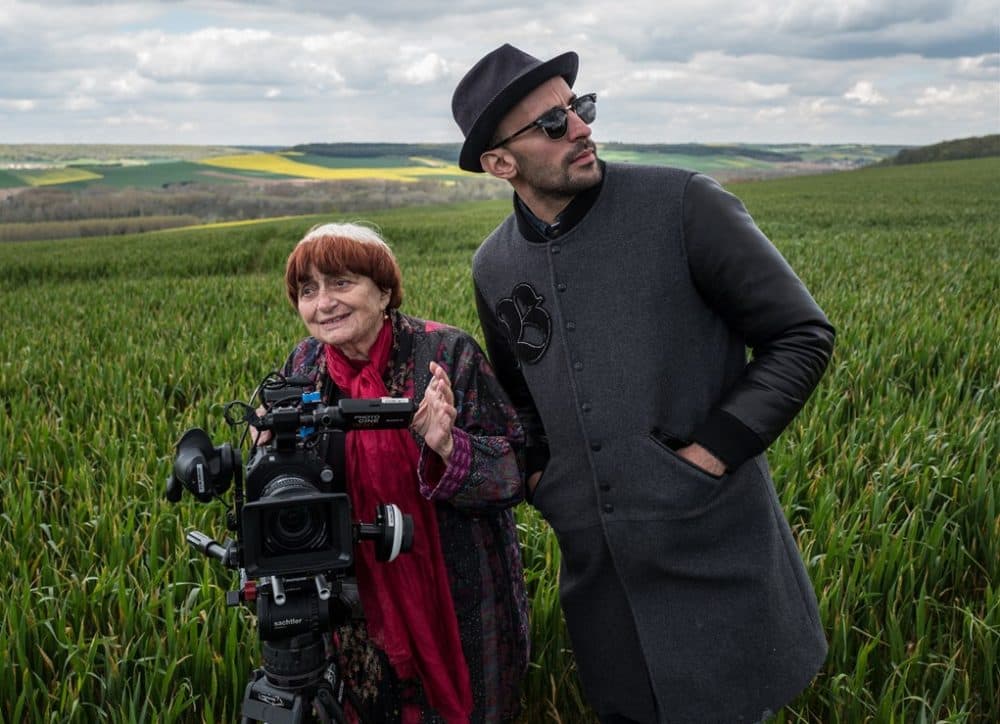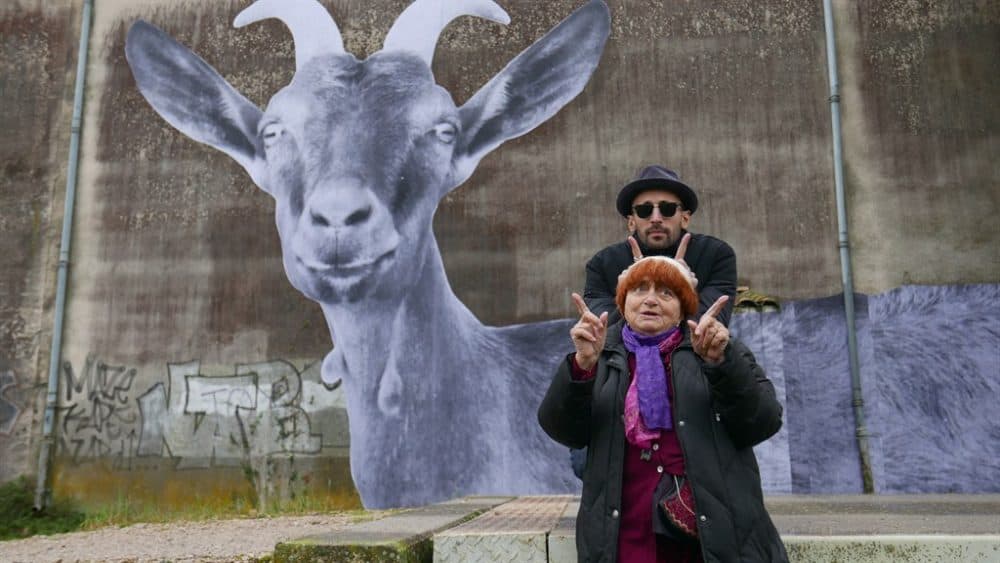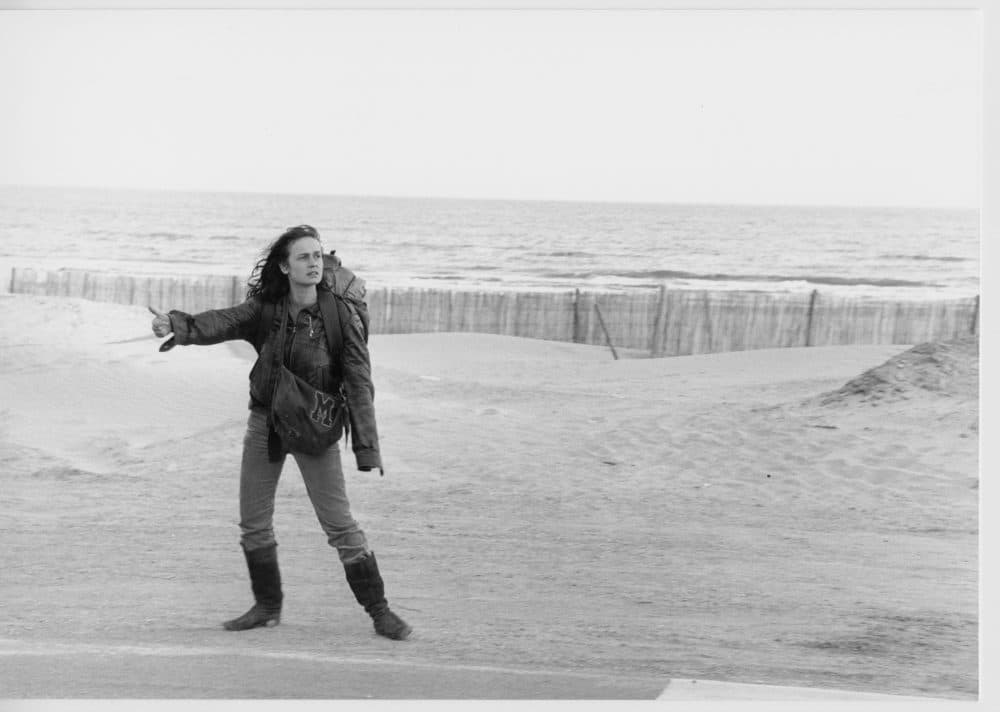Advertisement
A Pioneer Of The French New Wave, Filmmaker Agnès Varda's Career Spans The Playful And Pointed

Filmmaker Agnès Varda has seen and done much in her life — from witnessing the German invasion of France during World War II, to becoming the female face of the French New Wave, to hanging out with enigmatic Doors' frontman Jim Morrison and, now, being recognized with a Charles Eliot Norton professorship at Harvard.
Varda, who was born in Brussels and spent most of World War II on a boat off the French port of Sète (where her mother was born), stumbled into film. Bestowed with the birth name of Arlette Varda, she changed it at the age of 18 — something that other famed French filmmakers of the time like Jean-Pierre Melville and Chris Marker did as well. A photographer by trade, Varda returned to Sète to shoot pictures for a friend who was physically unable to make the journey to the Mediterranean fishing port.
That photographic mission inspired Varda to make a cinematic postcard of the area with Philippe Noiret ("Cinema Paradiso") cast as a man trying to reconcile a rocky marriage. The result was the 1955 film "La Pointe Courte" — the title referring to a small, water surrounded quarter of Sète. Shot using natural locations on an incredibly modest budget — and reluctantly edited by fellow filmmaker Alain Resnais who was working on a similar effort at the time -- the film is widely considered the forerunner of the French New Wave.
Varda would go on to make over 20 feature films and a myriad of shorts, seamlessly moving between the narrative and documentary formats. The latter of which she generally appears in as a prominent player, but never a self aggrandizing one as sometimes these things go (see Michael Moore). Diminutive in stature and pixieish in presence, Varda, now approaching 90, appears warm, jovial and endearing on screen.

In the new “Faces Places,” nominated for an Academy Award this year, she and the graphic artist known as JR pair up in sagging French mining and farming towns to celebrate residents’ lives by grafting their countenance onto buildings and other stone faces. Varda opens the film with a humorously staged montage of JR, some 50 years her junior, and herself crossing paths in the French countryside — even in a disco club — but never connecting. It’s a wonderfully playful preamble that’s smartly tongue in cheek and there’s immense pleasure in watching Varda shake it up on a dance floor packed with millennials.
Varda's gamboling cinematic style is perhaps most prominent in “The Beaches of Agnès” (2008), her deeply nostalgic saunter through her personal memories. One part of the film is set on a beach in the middle of downtown Paris, where Varda's office staffers sit at desks in their bathing suits and peck away at their computers. Gold statues that Varda and her husband, fellow New Wave filmmaker Jacques Demy (“The Umbrellas of Cherbourg”), won litter the sand. Demy passed away in 1990 and much of the film becomes a warm embrace of his spirit as well as a celebration of their union. "Jacquot de Nantes," a 1991 love letter to her longtime partner, is a unique blend of dramatization that recounts Demy’s humble upbringing as the son of an auto mechanic and commentary from the gaunt Demy, his health obviously failing at the time, on his journey into film.
Categorically, Varda and Demy were considered part of the Rive Gauche — or Left Bank — side of the New Wave movement, which embraced a more experimental style than the Cahiers du Cinema group. It's something of an ironic distinction considering the New Wave itself was considered experimental as it eschewed traditional methodologies (shooting on the street versus on staged sets) and subjects (filming social issues of the time verses literary adaptations or period films). Other Left Bankers included Resnais and Marker (“La Jetée”) while more widely known and financially successful auteurs of the era like Jean-Luc Godard and François Truffaut led the list of Cahiers du Cinema filmmakers.
In theme, Varda’s narrative works have centered on feminist issues, primarily the plight of women in transition. Her second feature “Cléo from 5 to 7” (1962) told the story of a waifish singer and hypochondriac who stresses over the results of a test at the doctor's office she just had. As the time frame of the title alludes, the film employs the “day in the life” format that became quite prevalent in New Wave films of the '60s and '70s. A lesser known work that starred Varda’s son Mathieu Demy, “Documenteur” (1981), chronicled the ordeal of a French woman, separated from her partner and dislocated in Los Angeles. And “Vagabond” — at least as far as this critic is concerned — remains Varda’s magnum opus. Deft in structure, the film begins with the frozen body of a woman discovered in a ditch and then, through various POVs of the people who interacted with her prior to her death (some share a meal with her, some have sex with her), we get obfuscate pieces that begin to show her full essence. Told in a documentary style, the effective orchestration of nonlinear narrative serves to deepen the dive into a soul that doesn't want to be unlocked.

In her non-narrative endeavors, Varda has often wrapped her camera around the stories of common people struggling, whether confronted by economic challenges, socially disenfranchised or both. “Faces Places” may be an oblique example, but the “The Gleaners and I” (2000), where Varda follows commoners who pick over harvested fields as a primary means of sustenance, and “Daguerréotypes” (1976), which records the daily routines of hard working street merchants in the Rue Daguerre neighborhood of Paris, are both decidedly so.
During her long career, Varda has also notched some rather unique accomplishments, take her 1968 short “Huey” about the protests to free Black Panther activist Huey Newton, or her script credit on Bernardo Bertolucci’s iconoclastic “Last Tango in Paris” (the French dialogue) and her time with Jim Morrison near the time of his tragic passing (Morrison appeared in Varda’s 1969 Hollywood ménage à trois film, “Lions Love (... and Lies)” that has the period trappings of a “Valley of the Dolls” chapter).
She’s worked with big names (Deneuve, De Niro and Belmondo) and no names. It’s a rife life and career rightfully recognized by Harvard’s Mahindra Humanities Center and, perhaps, the Academy come March 4.
Agnes Varda will be at the Harvard Film Archive on Friday, Feb. 23 and Saturday, Feb. 24 to introduce her Oscar-nominated film "Faces Places" and 1985's "Vagabond," respectively. She is also one of three selected lecturers (the others are Frederick Wiseman and Wim Wenders) for Harvard's Norton Lectures on Cinema on Monday, Feb. 26 (“The 7th Art and Me”) and Tuesday, Feb. 27 (“Crossing the Borders”). The Norton Lecture series is free to the public, however you need to get tickets at the Harvard Box Office the day of the event.